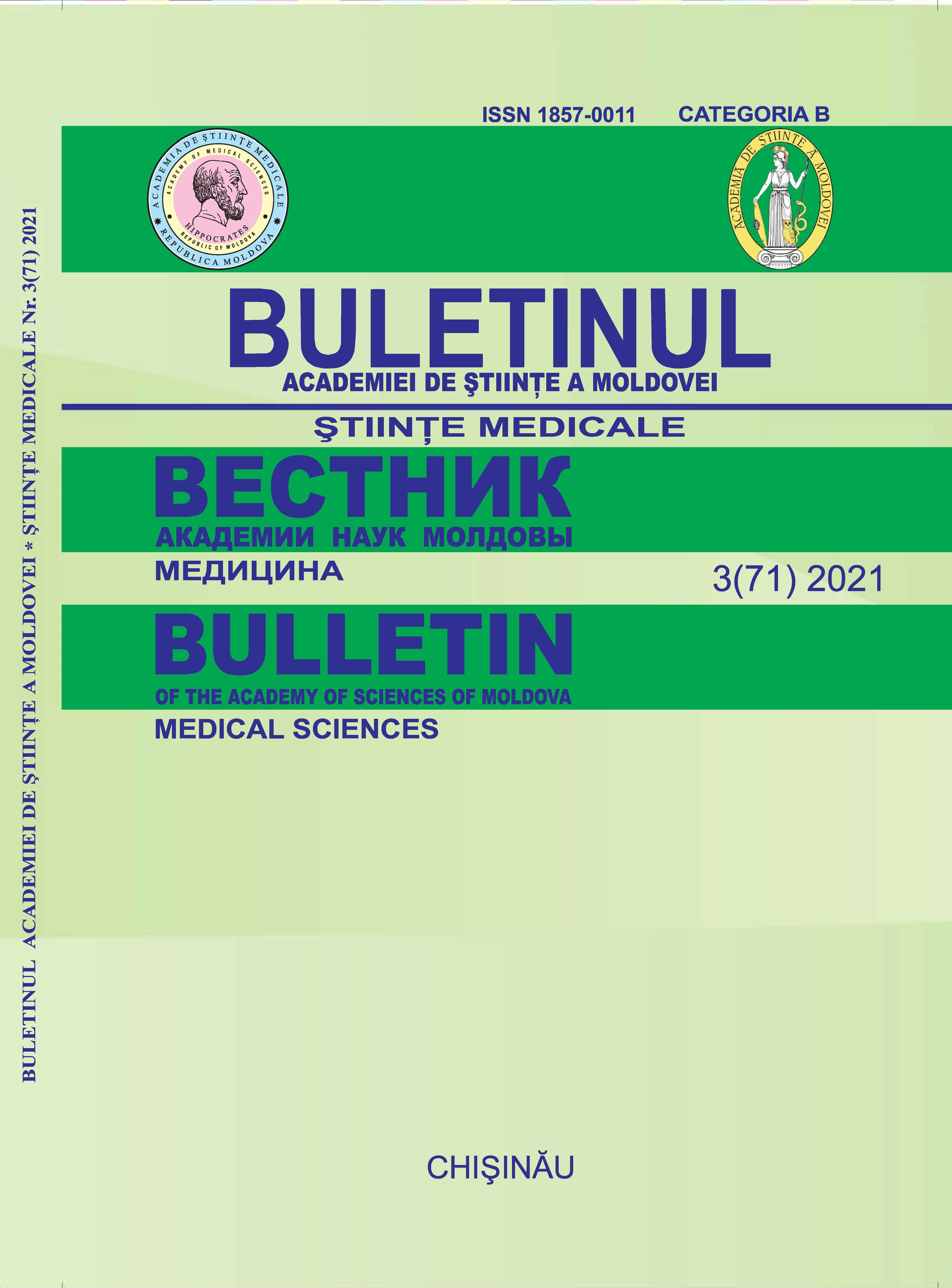Epidemiological and clinical significance of medico-social predictors and determinants in the development of relapses of pulmonary tuberculosis in adults and the management of medical asistance.
DOI:
https://doi.org/10.52692/1857-0011.2021.3-71.21Keywords:
pulmonary tuberculosis, relapse, risk factors, determinants, medical care, social protectionAbstract
The article presents data indicating that at present one of the most important clinical problems is the relapse of pulmonary tuberculosis (TB) in persons from groups of medical and social risk. It is shown the frequency of the main medico-social predictors and determinants that have the greatest influence on the epidemic situation for tuberculosis. And, itwas also determined their role in the development, course and outcomes of relapses.It was found that the revealed features of pulmonary TB relapses in people with different social structures, includingsocially maladjusted categories of the population, indicate the need for differentiated measures for their timely detectionand prevention. An action plan and a number of activities focused on the needs of people, ensuring the optimization of theprovision of anti-tuberculosis care and social protection of this category of patients, are described.
References
Bang D. Recurrent tuberculosis in Denmark: relapse versus re-infection. Int.J.Tuberc.Lung.Dis, 2010; p.447-453.
Batista J. Pessa M., Albuquerque et al. Smoking increases the risk of relapse after successful tuberculosis treatment. International Journal of epidemiology, 2008; Vol.37, p.841-851.
Burman W., Erin J., Bliven E. et al. Relapse associated with active disease caused by Beijing strain of mycobacterium tuberculosis. Emerging Infectious Diseases, 2010; V.15 (7), p.1061-1067.
Haidarlî I., Tudor E., Alexandru S. et al. Structura letalitații prin recidiva tuberculozei pulmonare. Buletinul Academiei de Știinte a Moldovei. Stiințe medicale, 2021; 1(69), p.15-20.
Zakoska M. Risk factors for relapses of tuberculosis. Eur.Resp.J., 2003; V.22 (45). P.2172.
Аллилуев А.С., Филинюк О.В., Шнайдер Е.Е., и др. Факторы риска рецидива туберкулеза с множественной лекарственной устойчивостью. Туберкулез легких, 2020; том 98, N 11, с.21-26.
Валиев Р.Ш. Рецидивы после лечения легочного туберкулеза без бактериовыделения в зависимости от вариантов химиотерапии. Туберкулез и болезни легких, 2015; N 5, с.55.
Гапоненко Г.Е., Овчинникова Е.Л., Ситникова С.В. Туберкулез у лиц с социально-маргинальным поведением: заболеваемость и эффективность лечения. Пульмонология, 2009; N 3, с.105-108.
Корж Е.В., Подчос Т.А, Стрига Л.В. и др. Эффективность лечения и рецидивы туберкулеза у больных ВИЧ-инфекцией с глубокой иммуносупрессией, начавших антиретровирусную терапию. Туберкулез и болезни легких, 2020; том 98, N 10, с.11-18.
Плиева С.Л. Прогнозирование рецидивов туберкулеза органов дыхания в современных условиях. Автореферат дис.канд.мед.наук. М. 2017; 26 с.
Рукосуева О.В. Причины рецидивов у больных туберкулезом легких в Ивановской области. Автореферат дис.канд.мед.наук. М. 2010; 24 с.
Яворский К.М., Александру С.М., Вильк В.В. и др. Стратегии обеспечения интегрированной комплексной медицинской помощи, ориентированной на больных туберкулезом и другими социально значимыми заболеваниями легких. Туберкулез и болезни легких, 2019; том 97, N 11, с.64-65.
Downloads
Published
Issue
Section
License
Copyright (c) 2022 Bulletin of the Academy of Sciences of Moldova. Medical Sciences

This work is licensed under a Creative Commons Attribution 4.0 International License.



